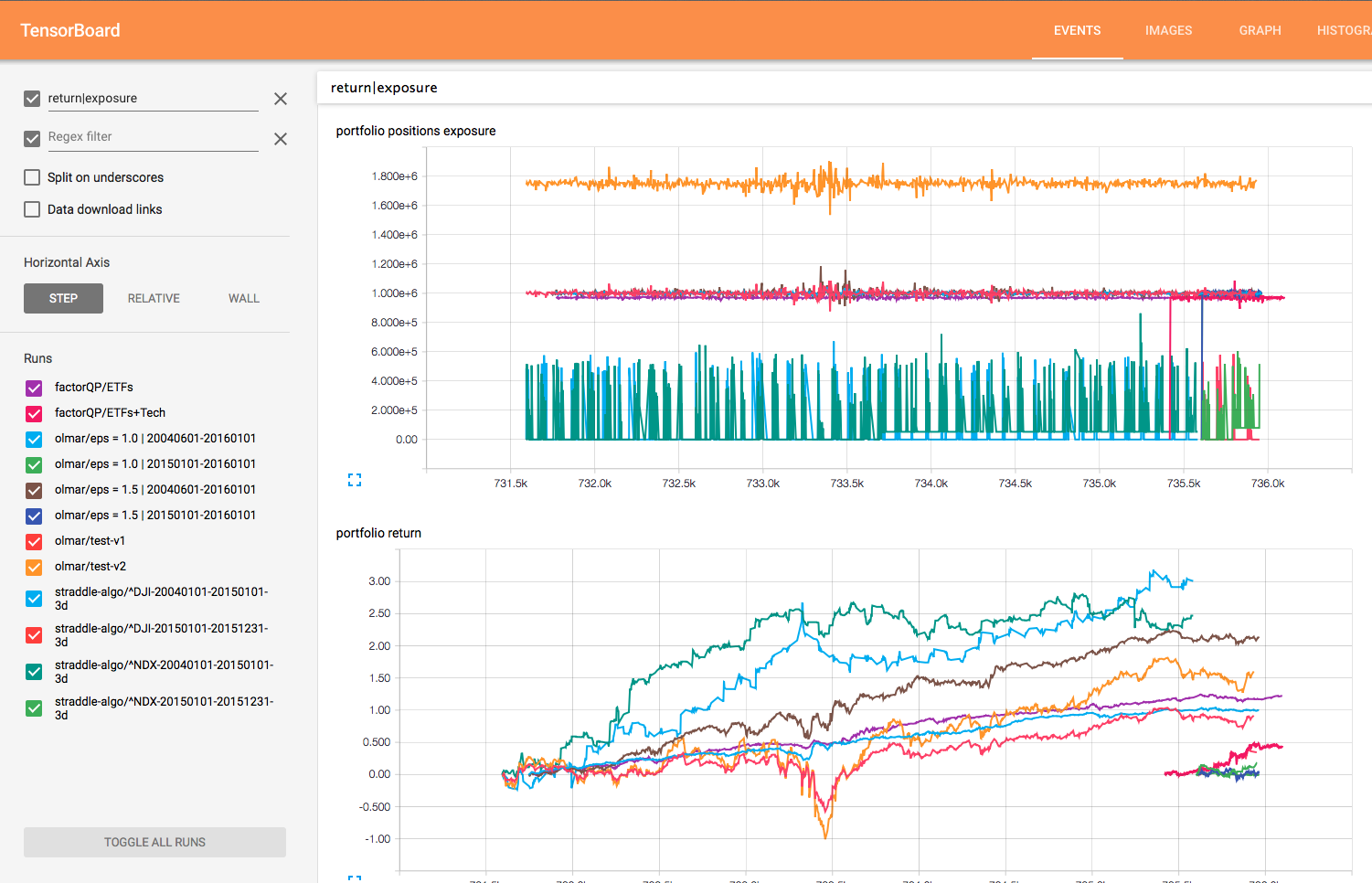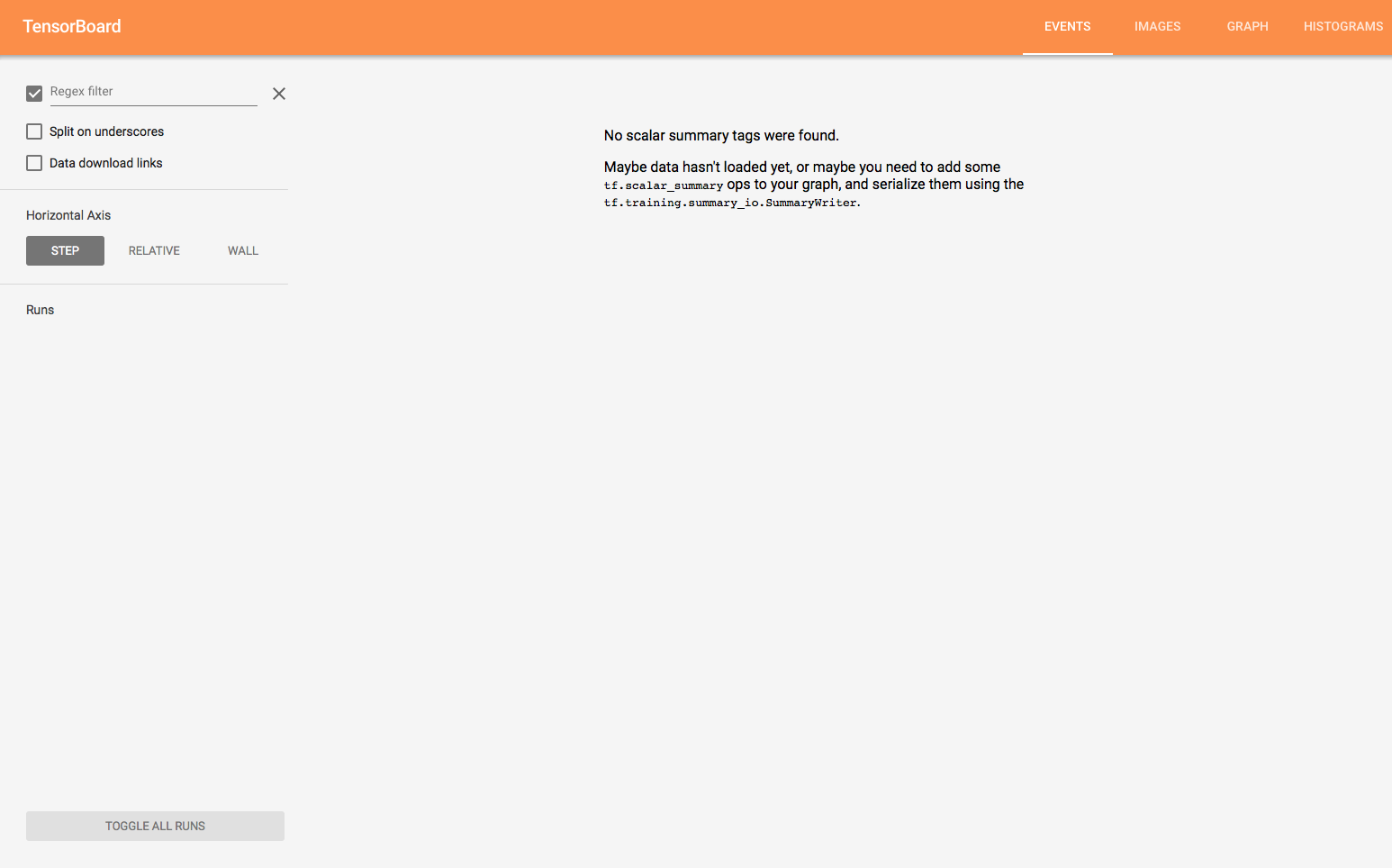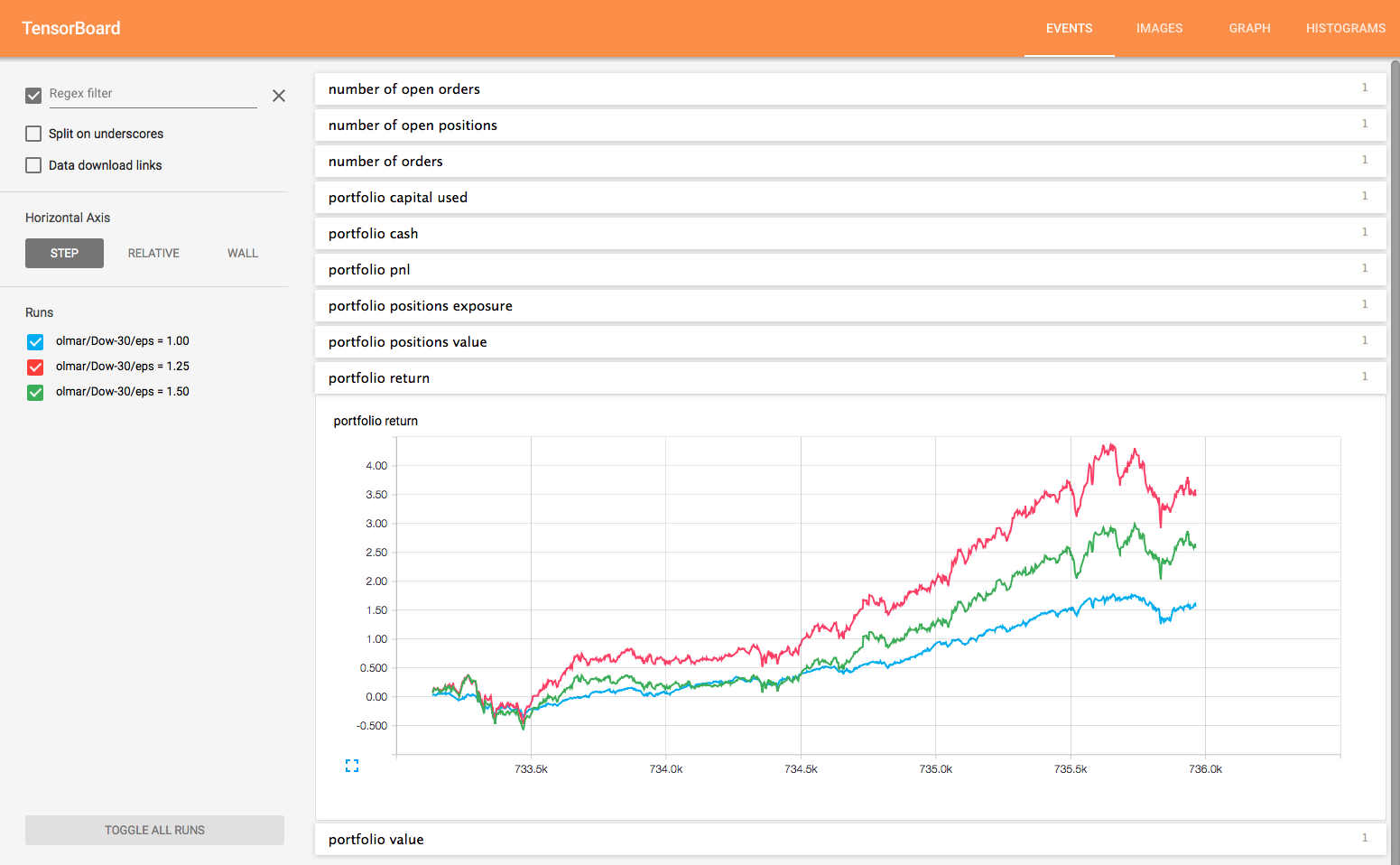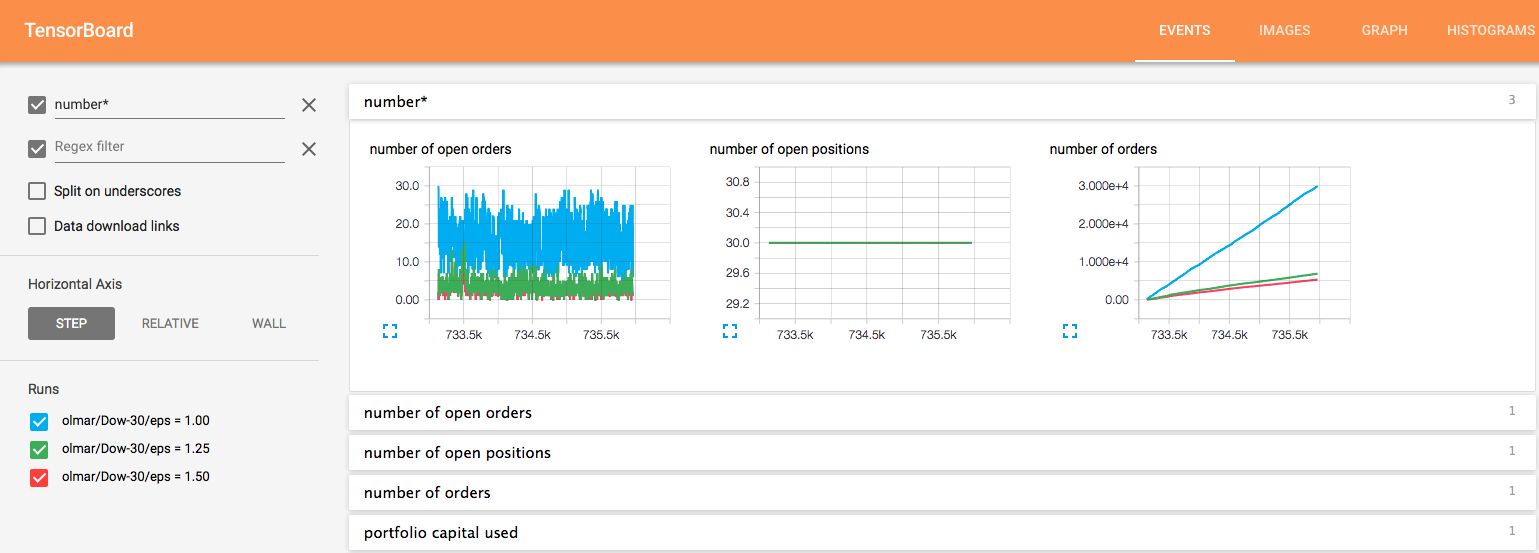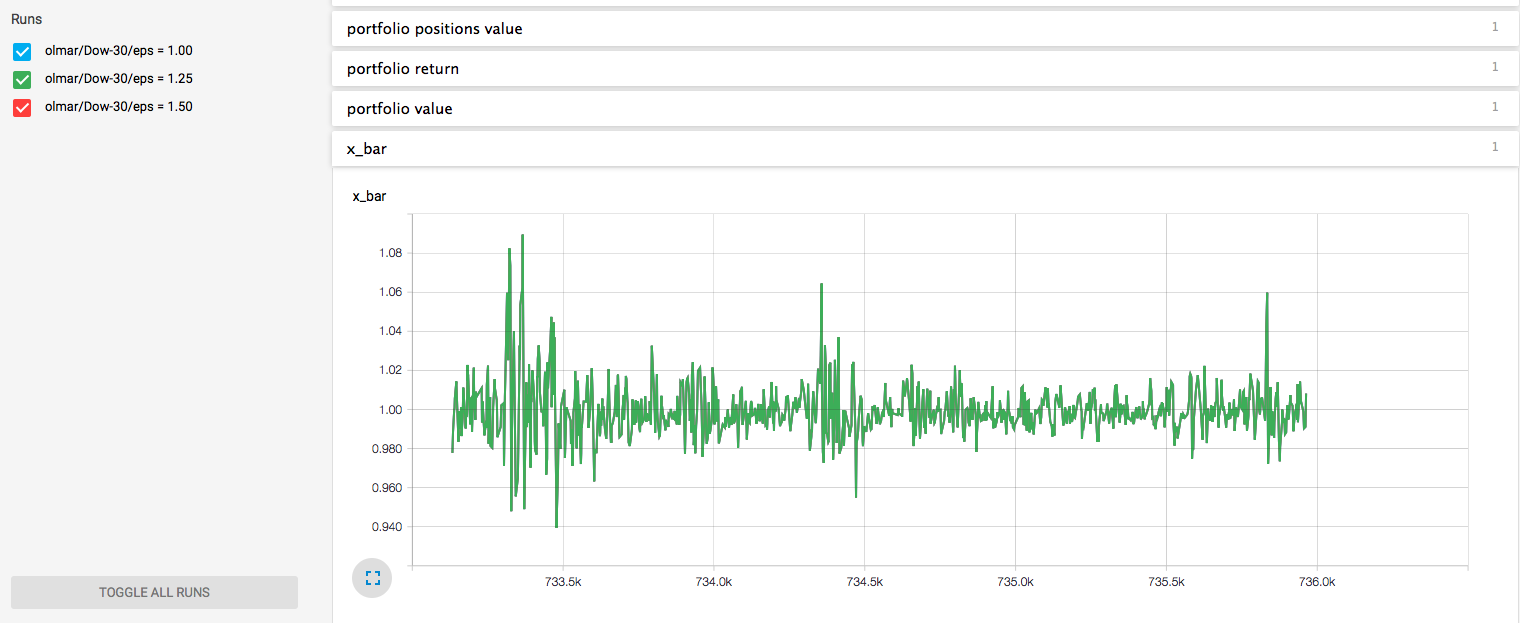Zipline is a python library for backtesting trading strategies. TensorBoard is a visualization tool provided with the deep learning library TensorFlow. These two can be used together to create a dashboard that monitors and compares Zipline backtests, and you don't even need to know/care a thing about deep learning.
If you have a working installation of Zipline, then the only thing you need to do is install TensorFlow. This can be done with pip or better yet conda. If you just want to use TensorBoard, go with the CPU only option. Once TensorFlow is installed, you can start TensorBoard from the shell with:
tensorboard --logdir=/tmp/where the --logdir argument is the parent directory to where the data for all of your backtest runs will be saved. Go to http://localhost:6006 and you should see this:
To start logging some info, run the Zipline example olmar_tensorboard.py to generate some backtests to monitor:
python olmar_tensorboard.pyThis runs three parameterizations of the OnLine Moving Average Reversion (OLMAR) example backtest on the Dow 30 from 2004 to 2016. Each one has takes a while to run, but as they run you can see the basic live stats displayed in TensorBoard, including any variables recorded with algo.record. You may have to hit refresh on occasion, but there's a setting in tensorboard.py to control how often data is written to the log files:
flush_secs: How often, in seconds, to flush the added summaries
and events to disk. [default 120]
Here's a comparison of the returns of each backtest once all have finished:
The regex filters let you group different stats together, so to see stats with "number" in the name:
You can see right away the lower values of epsilon result in lots more trading. Pretty useful for getting some quick insight.
Any variable recorded with zipline.algorithm.TradingAlgorithm.record is also logged to TensorBoard. We've done that here with the x_bar variable in OLMAR:
To use the TensorBoard logging class with a Zipline algo, all you need to do is initialize an instance of the TensorBoard class in the algo.initialize method, and add the line algo.tensorboard.log_algo(algo) to the end of your algo.handle_data function.
One could go wild adding different metrics to be logged, this was just a quick stab at it using attributes from algo.portfolio and algo.blotter. It's as simple as passing an extra other_logs dictionary argument:
algo.tensorboard.log_algo(algo,
other_logs={'number_of_short_positions': 5})For now these are logged by default:
# add portfolio related things
logs['portfolio value'] = algo.portfolio.portfolio_value
logs['portfolio pnl'] = algo.portfolio.pnl
logs['portfolio return'] = algo.portfolio.returns
logs['portfolio cash'] = algo.portfolio.cash
logs['portfolio capital used'] = algo.portfolio.capital_used
logs['portfolio positions exposure'] = algo.portfolio.positions_exposure
logs['portfolio positions value'] = algo.portfolio.positions_value
logs['number of orders'] = len(algo.blotter.orders)
logs['number of open orders'] = len(algo.blotter.open_orders)
logs['number of open positions'] = len(algo.portfolio.positions)
# add recorded variables from `zipline.algorithm.record` method
for name, value in algo.recorded_vars.items():
logs[name] = valueTensorBoard expects the x-axis to be an integer epoch number, so we use the algorithm date converted to an ordinal:
epoch = datetime.date.toordinal(algo.get_datetime())This is why the x-axis looks weird, but it allows backtests run between different time periods to line up correctly on the charts.
You can see this working here:
